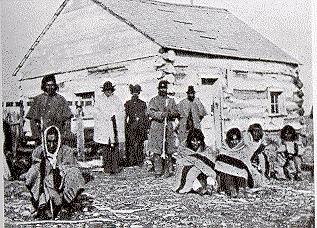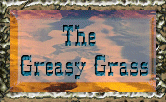Dakota Commemorative March

Camp Release
opposite the the mouth of Chippewa River 1862
Trials of the Dakota after the War of 1862
NEW ADDITION: The names of all of the condemned men and those imprisoned
The trials of the Dakota prisoners were farcical to say the least and they made a mockery of the justice system that America is so well known for. Many of the prisoners did not speak English and they didn't understand the cultural differences between them and the Military Commission who were trying them. The Dakota people felt it was Ok for them to say, 'Yes I was there' or 'yes I shot at X' because they thought that was what a warrior did in a war situation. However the Commission felt that those words were wrong because they didn't class the Conflict as a war. So even though the Dakota felt they were prisoners of war, they weren't treated as such, but as murderers. The Commission consisted of the following people: Colonel Crooks, Lieutenant Colonel Marshall, Captains Grant and Bailey, and Lieutenant Olin, later Major Bradley was substituted for Marshall. The charges were drawn up based upon information given by the missionary Rev. Steven R. Riggs, who had spent many years among the Dakota and resided in the area. He knew many of the men and questioned the witnesses who were bringing allegations against the Dakota. Riggs knew the Dakota language and could translate what was being said by the Commission to them. Antoine Frenier was another interpreter. As each prisoner was bought before the Commission the charges against them were read out. If he didn't admit to the charges evidence was introduced. Below are a few of the transcripts of the trials, from the Minnesota Historical Society. These samples are typical of most of the trials; short and very incomplete for a death sentence to be imposed, but imposed they were. They tried over four hundred prisoners. Out of these three hundred and three were sentenced to death, and eighteen sentenced to imprisonment. Most of those acquitted were from the Upper Sioux area.
Case 7: Ta-ham-pu-hida Camp Release opposite the the mouth of Chippewa River 1862 The
Military Commission met pursuant to the above order viz
Charge - - Murder Specification - Ta-ham-pu-hida, a Sioux Indian did at various times between the 18th day of August 1862 and the 28th day of September 1862 participate in various murders and massacres committed at various times between the above dates by the war parties of the Sioux Indians upon the persons of white citizens of the United States. this on the Minnesota Frontier and between New Ulm and Yellow Medicine. By order of Col. H. H. Sibley Witnesses -Commd'g Mil Ex -x S.H. Fowler. A. A. A. The prisoner being asked whether he was guilty or not guilty answered as follows-- I have not been at New Ulm, Yellow Medicine or the Fort. Have been here all the time with Red Iron. At the last Battle Indians gave notice that all the Indians who did not go would be killed. I staid at a distance on a mound and had no arms. The testimony being closed the Commission was cleared and proceeded to their finding. The Military Commission after due deliberation upon the foregoing find the prisoner as follows. Not
guilty on the charge.
Case 178: Na-pay-shne Camp Release opposite the mouth of Chippewa River, Minn.
The Military Commission met pursuant to the above order
viz -- Charge -Participation in the murders, outrages and robberies committed by the Sioux Tribe of Indians on the Minnesota Frontier. Specification
- In this that the said Na-pay-shne, Sioux Indian did join with
and participate in the murders, outrages and robberies committed
on the Minnesota Frontier by the Sioux Tribe of Indians between
the 18th day of August 1862 and the 28th day of September 1862
and particularly in the Battles at Fort, Birch-Coulie, New Ulm
and Wood Lake--Was
wounded at New Ulm-- Said he killed nineteen persons. Witnesses -Wakinya David Faribault Thomas Robertson Signed - S.H. Fowler. Lt. Coe - State Militia A.A. Prisoner states: I was not at the Fort -- I was not at New Ulm -- I had a sore knee and couldn't go. Thomas Robertson being sworn states -- I heard the prisoner say the morning after the first massacre that (his gun) was old gun, but that he had killed 19 with it-- This was in front of John Moore's house. His wife and children (seen?) at the Beaver Creek Massacre. Wakinya being sworn says -- I never knew anything about the prisoner. Prisoner states I never fired my gun off. And therefore the case being closed the Commission was cleared and proceeded with findings and sentence. The Military Commission after due deliberation on the foregoing find the prisoner, the said Na-pay-shne, a Sioux Indian as follows --
Guilty of the specification
We certify that the foregoing are the minutes of the proceedings
and testimony on the annexed charge, under order No. 55 of Col.
H. H. Sibley. I. V. D. Heard} [Signed by the five members of the Commission]
Case 238: Ta-hoh-pe-wa-kan [The
complete record of testimony follows. The charge, specification,
and order are in a form similar to the case above (178)] Louis LaBelle being sworn says-- The prisoner was among those who were on horseback in the battle referred to in case 236 -- He had a horse and was up on it when I saw him, belonging to the soldiers. (See case No. 236) [Ta-hoh-pe-wa-kan was found guilty and was sentenced to be hanged.]
Case 241: Pay-pay-sin [The complete record of testimony follows. The charge, specification, and order are in a form similar to the case above (178)] Prisoner states-- I was at Fort Ridgely and stood near the stable. I fired three shots. [Underlining is that of Recorder.] [Pay-pay-sin was found guilty and was sentenced to be hanged.]
Case 242: Am-ay-toa-ha-kshe-do [The complete record of testimony follows. The charge, specification, and order are in a form similar to the case above (178)] Prisoner states-- I was at the Fort. I went with the others to die. I was at Birch Coulee. I fires 2 shots-- I think 3. [Am-ay-toa-ha-kshe-do was found guilty and was sentenced to be hanged.]
Please click here to go to the trial of We-chank-wash-to-do-pee (Chaske) Photo above Minnesota Historical Society |
|
Website created by Dragonfly Dezignz. 2003 - 2014 Historic photographs courtesy of the Minnesota Historical Society Other graphics by
|


